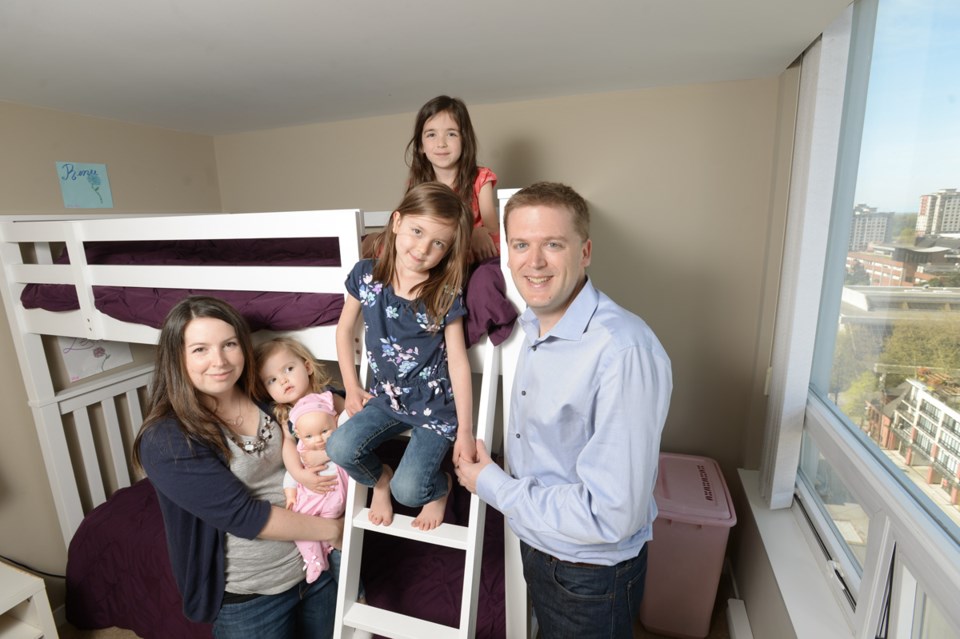The City of New Westminster’s family-friendly housing policy has earned an award from the Planning Institute of B.C.
Beverly Grieve, the city’s director of development services, and Tristan Johnson, planning analyst, recently accepted an Award of Excellence at the institute’s annual conference in Kelowna. The city received a silver award for Excellence in Policy Planning (city and urban areas) in recognition of its family-friendly housing policy.
“The policy was recognized as a visionary yet achievable forward-thinking action to ensure that the housing stock in the city is appropriate for families and children,” Grieve said. “It was also recognized that the policy was put into the context of the need to ensure that neighbourhoods are also family friendly; that there are services and amenities (schools, parks, childcare) that also meet the needs of families.”
When the family friendly housing bylaw was adopted last spring, the City of New Westminster became the first city in Metro Vancouver to mandate a percentage of three-bedroom units in new buildings.
The bylaw requires multi-family owned projects to include a minimum of 30 per cent two-and three-bedroom units, and at least 10 per cent of the total project to be three bedrooms or more. In addition, multi-family rental projects must include a minimum of 25 per cent two-and three-bedroom units, with at least five per cent having three or more bedrooms.
The family friendly housing policy and bylaw were also designed to support the city’s child and youth-friendly community strategy, which aims to see that neighbourhoods are developed in a way that better meets the needs of families, children and youth. This includes providing family-supportive infrastructure and amenities such as child care, parks, playgrounds and recreation programming, and urban and public realm design with particular attention to families, children and youth.



